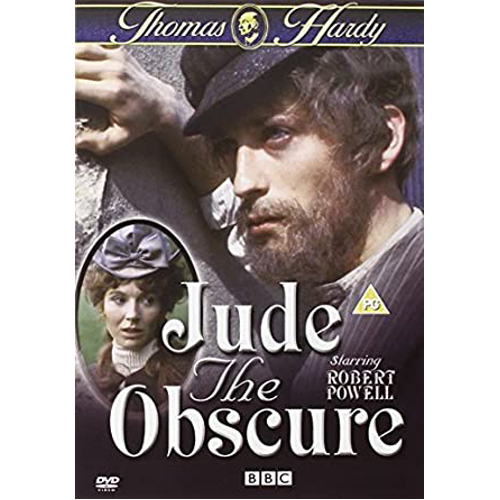
There are several references the “Jude The Obscure” (BBC 1971) throughout the BBC Tech Ops website: for example here (stories 6) and here (Period Pieces). This drama certainly was memorable to all those who took part in creating it.
In the nineteen sixties and earlier, the vast majority of Television drama was studio based: the actors performed the production in the studio as if it was a stage play – start at the beginning and go through to the end – and the programme was transmitted as it was being performed in the studio: theatrical style multi-camera live production.
If there were some outside scenes, these were usually shot on film, and fed into the production on cue from 16mm or 35mm Telecine machines. With the advent of broadcast quality videotape recording (typically the Ampex 2” quad head VTR and the machines (such as RCA) made under licence), it was possible to record a programme at a suitable time and broadcast it at a later scheduled time.
Typically, the recording to VT was done as if it was a live programme – one reason being that the Videotape was expensive, another was that the videotape was difficult (but certainly not impossible) to edit – and there was no real post-production set up.
So drama was still theatrical style multi-camera live or “as-live” production. In the days of black and white Television, film inserts into a studio drama were very noticeable: the gamma of the film stock and the television pick-up tubes were very different, and the 16mm was very grainy. Even though Vision Control operators did their best to match incoming film from Telecine with the output of the studio cameras, this difference was very annoying! It was only ever to get worse with colour Television. An obvious solution was to use the same cameras on the outside sequences as inside.
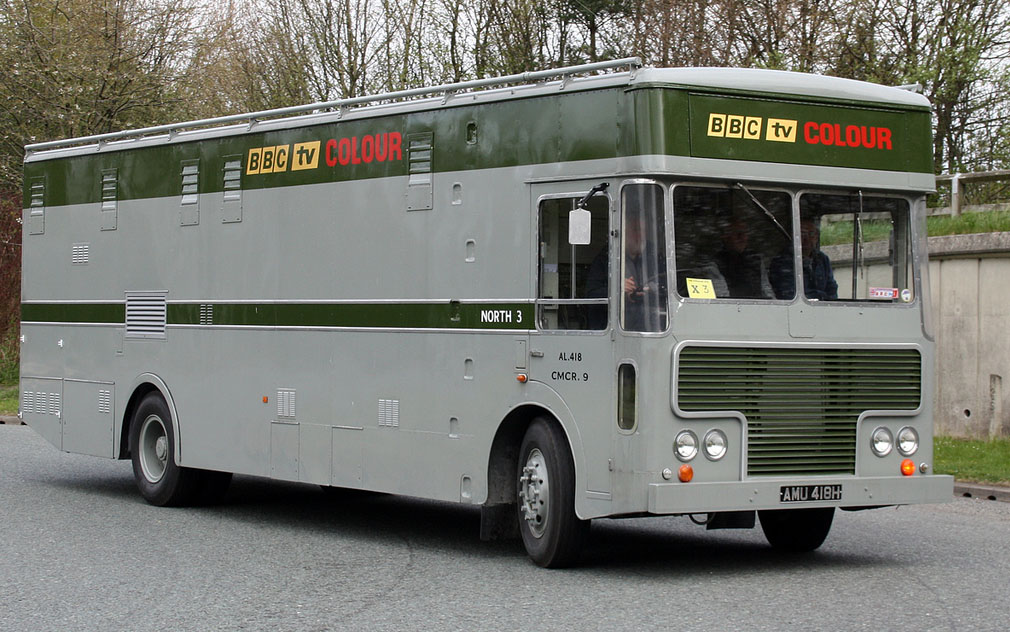
Initially this was done using large OB scanners, but very soon, new much smaller trucks came into use.
And there were improvements in the editing of videotape – with the advent of the Electronic Editor, it was possible to edit sections of the tape without physically cutting it.
So in the late sixties and early seventies, the elements were coming together – small colour outside broadcast units with more flexible camera mounts, colour VT editing without the cost of “consuming” expensive videotape – to allow elements of a drama to be acted outside of the studio and edited seamlessly into the main studio performance .
“Jude the Obscure” was one of the early productions using a full sized scanner. Let the BBC Technical Operators tell their stories….
Alan Taylor
I’m trying to fill in a few gaps concerning OB drama prior to the LMCR (Lightweight Mobile Control Room) and LPU (See below).
Does anybody recall working on dramas in that period or know any tales about them? I have some vague memories. One show I think must have been “Fall of Eagles”, 1974. I have a very vivid memory of being in a large courtroom, or other grand building in central London and seeing Patrick Stewart made up to be Lenin. He didn’t just look a bit like Lenin, he WAS Lenin, it was quite spooky. As it happens, the shows are available on YouTube, but the closing credits don’t seem to name any people from Kendal Avenue, but does credit film people from Ealing as well as the studio people. Can anybody throw any light on the location shoots for that show?
There was another drama in the early 1970s. I’ve long believed that it was called “Baker’s Dozen” and starred Stratford Johns, but neither IMDB nor BBC Genome come up with anything, so I might have both the title and star wrong. It was a police drama and was using one of the last B&W scanners, but might have been MCR21 after having been converted for colour. Any thoughts or suggestions?
One which I am confident about is “Jude the Obscure”, which was shot in 1971 on a full-sized colour scanner, CMCR4 – Lo4. I’ve already discussed it with John Nottage, we both worked on it. Did anybody else on this group also work on it? The logistics of getting a monstrous OB scanner into tiny Oxfordshire villages doesn’t bear thinking about, especially when accompanied by a tender almost as big and I would imagine a second tender just to transport the booms, which are regarded as too fragile to be transported along with other equipment. In addition, there was also a camera van, VT truck, together with a generator, so you had quite a circus before you start thinking about the art dept, wardrobe, make up, lighting and catering vehicles. EMI 2001 cameras were used and needed an hour to settle down and be lined up every time a camera cable was disconnected.
As it was a four camera scanner, the usual technique was to set up the first two cameras on set and then have the other two cameras rigged and lined up for the next scene. When shooting that second scene, the first two cameras were unplugged, relocated and lined up ready for use for scene 3. The results were fabulous, but the hassles to be overcome in order to achieve those results were all too obvious. I felt that the series demonstrated that OB location drama was the way forward, but the technology was not ready for it in 1971.
Towards the end of the 1970s, smaller cameras had become available and the LMCR and then the LPU were built to exploit the possibilities. These days, directors can dispense with a massive scanner. Several self-contained cameras can be carried in a small van, but instead of travelling light, present day dramas tend to have a circus even bigger than the one we had on “Jude the Obscure”.
Last year they were shooting “Father Brown” in the next village to me. The unit base was enormous and there were several vehicles almost as large as our “unwieldy and impractical“ scanner, but these vehicles were Winnebagos for the principal artists and palatial accommodation for make-up and costume departments, multiple catering vehicles, dining buses, grips vans, sparks, genny and heaven know what else. I’ve worked on enough modern dramas to understand what these vehicles are for and why they are needed. I’m just amused that large scanners were considered wholly unacceptable for drama shoots in the 1970s, but equally large vehicles are now essential these days, even for a single camera shoot. I know that the unit base can be much more distant than a scanner can be from the cameras, but still find it amusing.
————-
In 1976 a new vehicle arrived on the Television OBs fleet at Kendal Avenue, Acton North London: Unit MCR 30 designation name LPU 1. This was a ‘one off’ and the only one of its type built. The result of a new project – a vehicle that contained its own sound room, a production gallery, vision control area together with a separate ‘on board’ VT recording room.
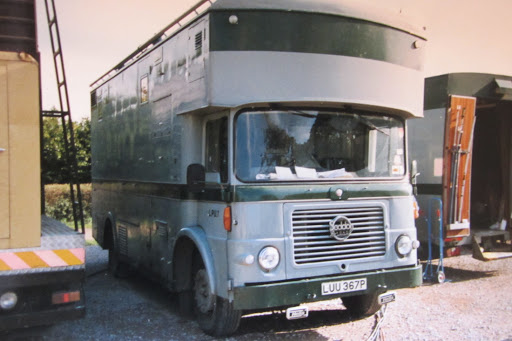
This made it a very versatile unit as prior to this development nearly all OB location video recording work was carried by larger OB control room CMCR vehicles together with a secondary accompanying VT recording truck. The new LPU was self-contained – it housed virtually everything necessary to undertake both TV production, editing and recording work within one main vehicle. The LPU’s role primarily as a location production unit took it to many places.
Robin Sutherland
I think there were quite a few dramas shot by OBs before the advent of the experimental LMCR (the old RE5 vehicle) and the arrival of the purpose built LPU and LMCR.
The “Bakers Dozen” series you mention is interesting. I was on LO21 in 1972 and worked on several of them, doing location inserts into a studio production using EMI 2001 cameras. There were some big names involved and I remember shooting scenes with Ann Todd and Michael Redgrave. It was a thriller anthology in 13 episodes linked by Rupert Davies playing a character called Baker, hence the working title of “Bakers Dozen”. But the title changed before transmission to “The Man Outside”, and that’s why you couldn’t find anything about it. Tx dates were from 12th May to 11th August 1972. Anyone remember working on the studio end of these? Directors included Douglas Camfield and Paddy Russell with many notable actors so must have been a top-drawer production but quickly forgotten.
I also worked (on the sound crew!) on a “Play of the Month” called “The Recruiting Officer,” a period drama done with a full EMI 2001 OB unit in 1973 in Wiltshire, mainly at Lacock. It had a stellar cast with Ian Mckellen, Brian Blessed and Jane Asher, directed by David Giles. It was lit by Tommy Thomas and checking the IMDB site see that he’s also credited with lighting two other “Play of The Month” productions, “Love’s Labour Lost” and “The Little Minister” in 1975 which one assumes were also shot by OBs although I can’t remember anything about them!
Alan Taylor
Thanks for the confirmation, Robin. It had been bugging me for more than twenty years. I was totally certain that it was “Baker’s Dozen” but was puzzled that I could find absolutely no record of it ever happening. It never occurred to me that it was just a working title. It didn’t help that I mis-remembered which famous TV detective had the main role.
Do you happen to have any shooting dates? We might be able to flesh out a few details on Brian’s list of MCR 21 shows. The IMDB cast list for the series reads like a “Who’s Who” for the acting profession. If you want a little reminder, there is a list of episodes with brief outlines of the story and star names here – The Man Outside
I knew that OBs did quite a few drama shoots before the LMCR and LPU. In my time on LO 21, when it had EMI 2001s, I remember doing several drama shoots, but can’t be sure if they were different ones, or a series of plays like “The Man Outside”. If …anybody …knows of other people who worked on them, I’d love to know more.
I always assumed that the Black and White Roving Eyes must have been used for drama shoots in the days of B&W television, but don’t have any information about one way or the other. I knew that other dramas were shot using big fleet colour scanners and would be interested if anybody could add anything about them. I worked on some Shakespeare plays recorded in theatres in those days, but don’t count them as being true location drama.
Mike Giles
I worked on a Bristol OB drama pre-1972. I can’t recall precise date or names, except that I know it was before my wife was expecting our second child. I can’t even be sure if it was black and white, MCR28, or colour, CMCR3, which Bristol took over from Kendal Avenue. The director was John King, father of Simon of wildlife fame, and involved a very old Manor House in the Perranporth area, I believe it was. I fancy I recall that this old house was the first manor not to have been fortified in any way and it was an absolute gem, still in private hands then.
The one thing that stands out is my feeling that it was totally wrong to shoot with large TV cameras in such a building – camera and lighting tripods were marking the beautiful old floors, despite tarpaulins and protective boards and the weather was so atrocious that every time anyone came in from outside, they dripped water all over the place. Fascinating experience though, lying under four-poster beds to get an 805 under the artists – the ceilings were too low for working overhead!
During the same trip to Cornwall, John King had the riggers chasing across an airfield and the adjoining fields to catch plastic bags that had been released to blow where they would, to accompany an obscure poem of which I have no recollection.
David Brunt
“The Little Minister” was all-OB recorded from 02 June 1975 to 15 June 1975. “Love’s Labour’s Lost” was all-OB recorded from 22 September 1975 to 04 October 1975. Although I’ve got filming days for all “A Fall of Eagles”, I couldn’t find any trace of OB on there (beyond the VT studios).
Geoff Fletcher
Anglia TV pioneered OB drama shooting on “Weavers Green” in the mid-1960s. It was way before I joined them from the BBC in early 1970.
Alan Taylor
I would guess that the OB shoot happened prior to the studio shoot. It’s usually done that way round in case characters gets rained upon in the OB sequence and then they can be wetted before walking into the studio set.
Bernie Newnham
I worked on “Jude the Obscure”, but I was in TC4. Each week the atmosphere got gloomier and more bad tempered. Robert Powell, who we’d worked with on “Doomwatch”, got quieter and quieter. Hugh David, a good chap we’d also worked with before, became angry at the cast, not least with a lady, who, Hugh told us, had it in her contract to take her top off in a scene, and come the day was apparently refusing to do so. A series that we were glad to see the back of.
Alan Taylor
I don’t have any recollection of the bad atmosphere mentioned by Bernie. Either it passed me by, or started after the OB. I think back on it as quite a happy OB. From what I can recall, it was quite a happy shoot. Hugh was calm and seemed pleased with how things were going. I didn’t notice any tensions with the actors, but I was rather young and inexperienced in those days and might not have noticed things which would be obvious these days.
Bernie Newnham
Not a bad atmosphere exactly, more a depressed atmosphere. probably comes from working on Thomas Hardy. Though Hugh was quite outspoken about the actress who [apparently] wouldn’t.
Alan Taylor
I can’t say that I’ve ever noticed any obvious correlation between the subject matter or author and the morale or happiness of the cast and crew.
I worked on a Film Two production, “The Russian Soldier”, which was an exceedingly depressing story where all the main characters and thousands of animals were doomed to die a horrible death, yet shooting it was a joyous process and we had some of the best unit parties ever. Others I can think of, but won’t name were happy fun-filled stories, but turned out to be the most miserable shows to work on.
I think it all comes down to the mix of personalities and whether seemingly minor issues manage to escalate into major differences. Alan Shallcross produced “The Russian Soldier” and several other dramas I worked on. He was a great believer in maintaining a good atmosphere on location and once told me that when on location, he regarded part of his job to be a sort of master of ceremonies, making sure that everybody got on well together in order to produce the best possible results. When spending ten or twelve weeks on location with a relatively small number of people, the way that people interact and work together becomes hugely important. If it turns into a bad atmosphere, you just want it to finish and to get out of there. Fortunately that’s not a situation I have had to face very often.
When it comes to topless women and ‘sexed up’ storylines, Barry Davis (the director, not the commentator) directed Iris Murdoch’s “The Bell”. Near the start of the book, it describes a house window where we see two people smooching to some music. That wouldn’t do for Barry, so with it being one of the first scenes in the story, the party was portrayed as being something closer to a wild orgy in order to make people want to keep watching. There was a scene in a later episode where a nun had to be rescued from drowning in a lake by another nun who swims to her aid. Again, this wouldn’t do for Barry, so the scene ended up requiring a nun to rip off her habit and dive topless into the lake to rescue the drowning nun (played by Trudie Styler – aka Sting’s wife).
Barry then needed to find an actress who was a strong swimmer, was prepared to have her head shaved and to be seen topless – not an easy one to cast. In the end he found one who met two out of three of those conditions. You’ve guessed it, shaven head and topless was deemed to be more important than being a strong swimmer. When action was called, she ripped off her habit, dived into the lake and headed towards Trudie. When she reached her, it was the most realistic near-drowning sequence imaginable, largely because she could hardly manage to keep afloat any longer and was clinging on to Trudie in the hope of getting some buoyancy, while Trudie was pretending to drown until it dawned on her that if things carried on the way they were going, she was in danger of being pulled under and drowning for real.
Alex Thomas
I worked on “Jude The Obscure” as an OB cameraman. I remember that the owners of a little cottage spent their facility fee on a 625 line colour television so they could see how charming the exterior of their home looked. Unfortunately the large aerial erected on their roof was in position before recording began so that the firm that rigged it had to take it down.
One of the attractions of the area was the absence of barbed wire which would have been a serious anachronism as it hadn’t been invented when Jude was set. Because of the questionable morality of the plot we were unable to use the local C of E church but we were welcomed into a Roman Catholic church in Oxford.
Alan Taylor
I’m pretty sure that Selwyn Cox was also a cameraman, but can not remember the other two. I’m also pretty sure that Peter March was floor manager, but his presence didn’t go down well with the AFMs from drama department. There were some spats between him and Sue Marlborough.
I can remember a lot of the locations [used in “Jude the Obscure”]. I now live not too far from there and often pass places and realise we shot there. I think the house you described in the aerial anecdote might have been in East Hanney. I also remember shooting in the Jericho area of Oxford in a street of run down two up two down terraced houses. One was on sale for £650 at the time and I thought it was ludicrous to expect somebody to pay that much for a run-down slum. That area has now been gentrified and some of those previously run-down slums are changing hands for close to a million.
As it happens, I can’t remember anything other than fabulous sunny weather. If anything it was a bit too hot on the day that one of the actors had to slop around a big vat of pig’s entrails. They were the real thing and the hot weather wasn’t making them any more fragrant, quite the reverse.
Alex Thomas
I am sure that Frank Hudson was the senior cameraman on “Jude”. He also starred in the opening credits of “Grandstand”.
I remember the actress getting upset at having to handle the “chitterlings” or entrails of some poor animal as she had to do a fully practical rehearsal and then a take.
Geoff Fletcher
In my experience long location drama shoots follow a similar pattern. First few weeks enthusiasm, middle weeks morale drops and tendency to tetchiness, last few weeks enthusiasm again and as the end approaches regrets that it will soon be over and everyone will go their own ways again.
When I was on Dave Mutton’s Crew 14 we did “Les Misérables” serial in Lime Grove. Frank Finley was Valjean and Michelle Dotrice was Fantine. Over the weekly episodes she lost her teeth, her hair, and died a horrible death. Valjean was hounded unmercifully by Javert. The crew became gradually more and more depressed and we all started to loathe the poor actor playing Javert – so much so that even now I can’t remember his name.
Our alcohol intake post recordings increased noticeably as the weeks went on. On the final day we all felt a sense of relief. I remember Dave Mutton waltzing around with a laughing diminutive make up girl standing on his size 13s in celebration!
Geoff Hawkes
I worked also on “Jude The Obscure” in TC4 and have a couple of photos in my collection of ones I took around that time. As you know, we weren’t supposed to do that, hence these were taken surreptitiously from behind the scenes and don’t reveal much of what was happening apart from the pig and the wrangler watching it.
Since you were there Bernie, I’m wondering if that’s you with Camera 5, as that sounds about right for what you’d have been doing at the time (1971).
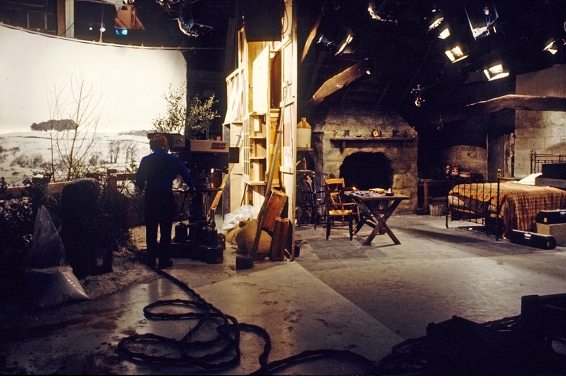
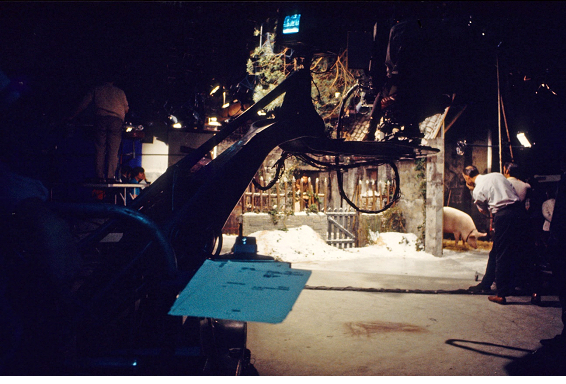
Bernie Newnham
Wow – that does indeed look like me!
Oh – and some small amusement came from the episode of the pig. The handler lady was about half its size, and in TC4 it got spooked and raced around the firelane pursued by small woman, with the rest of us scattering.
Geoff Hawkes
I thought so and if you look closely you can see the red colour of your hair which is what gave it away.
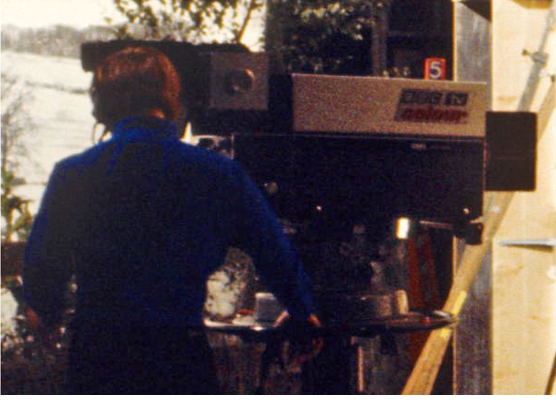
I’m not a fan of Thomas Hardy (quite the opposite, give me Dickens any time), having been given a copy of “Tess of the D’Urbervilles” as an English prize in the fifth form and read others of his books, I’ve always found his writing rather gloomy. I think there was a part in “Jude The Obscure” where two children hanged themselves and that being depicted in that production, horrifically. I also think that Hugh David’s wife, the actor Wendy Williams, was there and I wonder if the children were theirs but there’s no mention of them or her in the cast list.
Alan Taylor
When we shot “Jude the Obscure”, radio talkback was still in its infancy.
BBC Designs Dept had come up with a system which was installed in the type II scanners. Some might say that having a go at Designs Dept is taking a cheap shot, but even by their standards, that radio talkback system was not one of their finest moments. The first assistant carried two units, a receiver and a transmitter: they were worn like gunslinger’s holsters, on a belt with one either side.
The first problem was that when you press transmit, your receiver picked up this strong signal emanating nearby and made a deafening noise in your ear.
The second problem was that they used PP4 batteries, which were a 9V battery about the size of a C cell, with a snap terminal at either end. Nothing wrong with that in principle, other than that you couldn’t expect to buy them in ordinary shops and with six or eight people using radios, where each of them needed two batteries, which might need changing half way through the day, the number of batteries consumed in a week was pretty high. It was necessary to book out plenty from Tech Stores before leaving base. The purchasing people noted that we were getting through them at a rate of knots and bought them in bulk, which would have been a prudent measure if it were not for the very limited shelf life of those batteries. You could book out a box of batteries from stores and find that they had hardly any capacity left when you used them on site.
There was another problem with this radio system. The BBC had almost exclusive use of the Band 1 radio spectrum. Obviously it was primarily intended for the 405 line television transmission system, but the BBC also used gaps in the spectrum for radio mics and these early radio talkback systems. Radio Mics transmit at such low power that they can’t really interfere with anything. A base station transmitter in a scanner is a much more powerful beast and the radio talkback system had a habit of blocking out BBC1 reception close to the scanner.
When we were shooting “Jude” in the Jericho area of Oxford, there were some rather heated exchanges from locals who were being prevented from watching BBC TV because of the spurious transmission from the BBC scanner in their road. This Band 1 spurious transmission problem remained unresolved for a while. When I was working on the colourised MCR 21, it was still happening, and the Designs people decided to experiment. They did their sums and calculated what combination of inductors and capacitors would be needed to make a passive box to put in line with the aerial feeder to filter out the spurious signals. When we installed it, the box totally eliminated the fundamental frequency, but let the interference through unhindered.
That’s when the boffins learned the difference between parallel and series tuned circuits.
Fortunately, the fix was simple, rewiring it the other way round, but after all the debacles along the way, it didn’t make them look too good.
That radio system was eventually abandoned in favour of Storno walkie talkies similar to those used by Police forces.
One more frivolous thing about PP4 batteries. Many of us will have discovered that when PP3 batteries have been finished with, they have a certain amount of charge left and that two can be plugged together to form an 18V short circuit, making a very welcome hand warmer to slip inside gloves during freezing weather. With vast numbers of used PP4 batteries, it was tempting to try them as hand warmers too, but having the terminals at opposite ends made it a bit tricky. However, if you dismantle an old one, it provides two snap terminals which can be soldered to a length of wire. By snapping that adapter onto a used cell, you get a hand warmer …. expect it was a bit too powerful. PP3s have a certain amount of internal resistance which limits the current flow to the point where the arrangement gets pleasantly warm. PP4s appeared to have much less resistance and although it was only a 9V short circuit compared to the two PP3s’ 18V short circuit, more current flowed, which made it far too hot to be practical as a hand warmer.
When we tried it and discovered how hot it was getting, we also discovered that the terminals had become too hot to pull off the battery. Wire cutters were used to cut the connecting wire before the device turned into an improvised explosive.
Albert Barber
I was in Pres at the time as Producer on a promotions team. When the captions arrived from the Messely department they had captioned the 12×9 as ‘Jude the Obscene’…. It nearly went out on air!
Graeme Wall
That would have upped the ratings!
++++++++++++++++++++++++++++++++++++++++++++++++
Jude the Obscure
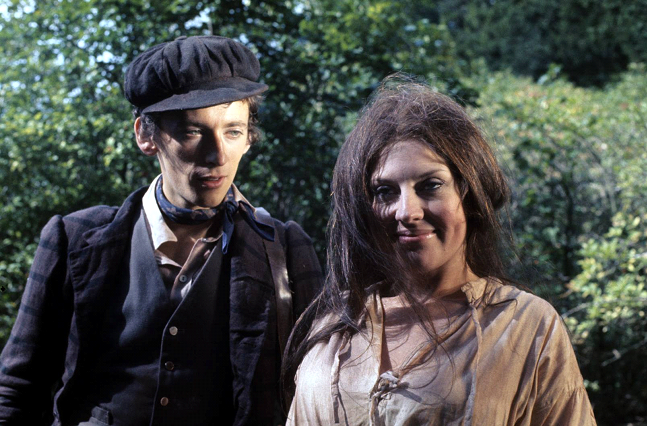
Episode Summary:
Born into poverty, young Jude refuses to accept his lot in life. As his dreams are shattered one by one, his life descends into tragedy.
1. At Marygreen
| Jude Fawley lives in the village of Marygreen with his aunt. When his schoolmaster leaves Marygreen for a position of Christminster, Jude hopes to follow him there someday | 03 October 1971 |
2. To Christminster
| Jude serves out his apprenticeship as a stonemason and then goes to Christminster hoping to attend school there | 10 October 1971 |
3. To Melchester
| Jude departs Christminster, having been rejected for admission by the Dean of Cardinal College. | 17 October 1971 |
4. To Shaston
| Phillotson proposes to Sue, who asks Jude for his advice about the proposal. | 24 October 1971 |
5. To Aldbrickham
| Sue and Jude begin divorce proceedings against their respective spouses and start living together under one roof but in separate rooms. | 31 October 1971 |
6. Christminster Again
| Jude travels in search of work and the pregnant Sue finds that she must work too. | 07 November 1971 |



